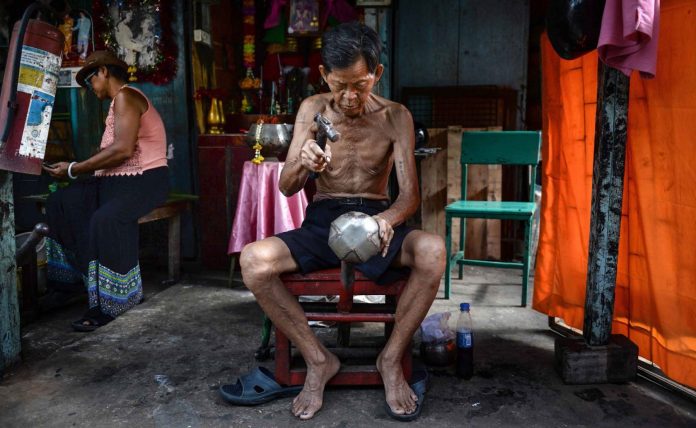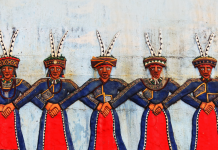by Hastings Forman
THE CLANGING OF HAMMERS ON METAL, ECHOING THROUGH THE BACK ALLEYS OF BANGKOK, SOUNDS OUT A FADING TRADITION
In the face of globalisation, numerous traditional arts are at risk of disappearing. In Thailand, one craft on the brink of extinction is the making of monks’ alms bowls – by hand. It is common to see Buddhist monks wandering through the country with these bowls, collecting offerings from devotees – a custom that dates back thousands of years. The tradition of handcrafting alms bowls is just as old.
However, now that most bowls are mass-produced in factories, these niche craft communities have died out…save one: Bangkok’s Ban Bat (the “Monk’s Bowl Village” – bàht is the Thai word for a monk’s bowl; ban for community). A group of craftsmen from Ayutthaya settled in Ban Bat in 1783 during the reign of King Rama I, and began making alms bowls for a living. Today, five families of artisans live here, and continue to make alms bowls in the traditional way, maintaining this tradition (although unlike their ancestors, they may have a bit of help from a blowtorch). The workshops echo with the ear-piercing clangs of hammers hitting metal, making watching television and chatting a little difficult for the neighbours. Many of the alms bowl makers wear earplugs.
When a monk orders a bowl, the families come out in full force to produce it. Each family has a different responsibility during the process: First, the steel rim of the bowl is wrought into a circle. A cross-shaped frame is then attached to the rim, and the gaps are filled with white steel. Finally, the bowl is hammered into shape, and polished and glazed to make it waterproof.
For the rest of this article (Asian Geographic No. 124 Issue 2 2017) and other stories, check out our past issues here or download digital copy here.





![The Road to Independence: Malaya’s Battle Against Communism [1948-1960]](https://asiangeo.com/wp-content/uploads/2021/07/WhatsApp-Image-2021-07-26-at-11.07.56-AM-218x150.jpeg)





